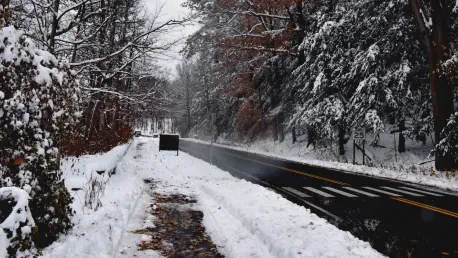As winter approaches, school officials are tasked with the challenging decision of whether to cancel school due to snow. This critical decision involves a meticulous process to ensure the safety of students and staff amidst inclement weather conditions. To understand this thorough approach, let’s explore how school districts in Ohio County, West Virginia, and surrounding areas navigate the interplay of safety, collaboration, technology, and communication in making snow day cancellations.
Safety as the Top Priority
Emphasizing Student and Staff Safety
The foremost concern for school officials is the safety of students and staff. Heightened vigilance ensures no risks are taken that could jeopardize their well-being on snow days. This guiding principle permeates every step of the decision-making process, ensuring that safety is always prioritized above all else. School officials approach each winter event with the understanding that the consequences of misjudging road conditions or weather severity could be severe. By continually emphasizing safety, they ensure that even the smallest risk factors are meticulously evaluated.
Any decision to cancel school hinges on comprehensive assessments of various potential hazards. These include icy roads, drifting snow, low visibility, and the overall condition of transportation routes. School officials are acutely aware that conditions in rural and elevated areas can be significantly more severe than in urban centers. Therefore, these factors are given particular attention. The goal is to circumvent any situation where school buses or students might encounter hazardous conditions, preventing accidents or delays that could pose serious safety threats.
Assessing Potential Hazards
To accurately gauge potential hazards, officials employ multiple strategies to gather data on current and forecasted conditions. Road assessments are conducted by driving various routes to identify areas prone to icing, snow accumulation, or reduced visibility. This real-time evaluation provides immediate insights into the challenges buses may face. Sidewalks, parking lots, and other areas around school properties are also checked to ensure they are ice-free and safe for foot traffic.
School officials also rely on weather forecasts and real-time data from advanced weather monitoring systems to predict how conditions might evolve. This includes monitoring wind chill levels, which significantly impact the decision to delay or close schools. Drifting snow and ice formations on less-traveled routes are critical factors that officials must consider to ensure comprehensive safety measures. By meticulously assessing these hazards, school districts can make informed decisions that uphold the highest safety standards for students and staff.
Collaborative Efforts
Involving Multiple Stakeholders
The decision to cancel schools isn’t made in isolation but is instead a highly collaborative effort involving multiple stakeholders. This ensures a well-rounded perspective and comprehensive data collection on road conditions and weather forecasts. Key participants in this effort include school superintendents, operations staff, bus drivers, and emergency management officials. Each of these roles brings unique insights and expertise crucial for a well-informed decision.
Superintendents often coordinate the overall effort, while operations staff are typically responsible for assessing school properties and transportation routes. Bus drivers lend practical knowledge of the routes, providing real-time updates on road conditions. Emergency management officials contribute broader insights on regional weather patterns and potential emergency scenarios. This collaborative structure enables accurate and timely decisions, ensuring no angle is overlooked in prioritizing safety.
Real-Time Road Assessments
One of the most important aspects of this collaborative effort is the real-time assessment of road conditions. Staff members actively drive along different routes to gather firsthand information, which is especially critical in higher elevations prone to snow accumulation. This boots-on-the-ground approach helps determine whether school buses can safely navigate these areas, offering invaluable real-time insights into road safety.
These assessments are conducted at various times to monitor changes in conditions throughout the day. Early morning evaluations are crucial, as they capture overnight developments like newly formed ice or snowdrifts. Simultaneously, mid-afternoon assessments help determine how well road crews have managed to clear routes. This hands-on approach ensures that information used in the decision-making process is as up-to-date and accurate as possible. By leveraging comprehensive road assessments, school officials are better equipped to decide whether conditions warrant a school cancellation or delay.
Utilization of Technology
Advanced Weather Stations
The adoption of advanced weather stations, such as the Perry Weather station at Wheeling Park High School, offers detailed and precise weather data that significantly aids decision-making. These sophisticated systems measure various weather parameters, including temperature, wind speed, humidity, and precipitation levels. By providing real-time data, these stations allow administrators to anticipate and prepare for incoming snow or other adverse weather conditions. This technological edge is critical for making well-informed decisions that prioritize safety.
The data gathered from these weather stations is often shared across schools within the district, ensuring that all administrators have access to uniform and reliable information. This collective approach enables a cohesive strategy in responding to weather events. Moreover, the local specificity provided by these weather stations allows school officials to assess conditions pertinent to their areas rather than relying solely on broader, less precise forecasts. In doing so, they ensure that the unique weather challenges of their specific locale are adequately addressed.
Leveraging Real-Time Data
In recent years, there has been a marked increase in the reliance on real-time data from weather stations and other technological resources. This trend towards utilizing advanced technology is driven by the need for accuracy and timeliness in decision-making regarding school closures. Real-time data enables officials to respond quickly to changing conditions, making swift adjustments to plans as necessary. This is particularly important when weather conditions fluctuate unexpectedly, necessitating immediate action.
Furthermore, utilizing technology ensures that decision-makers are not solely dependent on manual observations, which can sometimes be inconsistent. Automated systems provide continuous data streams, allowing for constant monitoring of weather conditions. These systems can alert officials to sudden changes, such as a drop in temperature that could lead to icy conditions or unexpected snow accumulation. By leveraging real-time data, school districts mitigate delays in communication and ensure that decisions are based on the most up-to-date information available, enhancing overall response efficacy.
Coordinated Communication
Robust Communication Channels
Effective and robust communication channels are essential for the seamless coordination of snow day decisions. School districts maintain constant communication among superintendents, directors of operations, and maintenance staff to ensure continuous updates on road conditions. This ongoing dialogue ensures that every stakeholder is well-informed and prepared to make swift decisions. Key information is relayed in real-time, enabling prompt responses to rapidly changing weather scenarios.
School officials also utilize various communication platforms to maintain this flow of information. These include radio systems, internal messaging apps, and regular conference calls. These platforms allow for immediate sharing of updates and enable quick consultation between different departments. This streamlined communication process is vital for ensuring that all relevant information is considered, reducing the likelihood of oversight or miscommunication. By maintaining robust communication channels, school districts enhance their ability to respond promptly and effectively to winter weather challenges.
Liaising with Emergency Management
Another critical aspect of coordinated communication is liaising with local emergency management officials. This collaboration ensures that school districts are not operating in isolation but are instead informed by broader regional insights. Emergency management officials provide essential information on county-wide road conditions, weather forecasts, and emergency protocols. This comprehensive understanding of the situation enables school districts to make well-rounded and informed decisions.
Emergency management agencies also offer valuable resources that can aid in school weather response plans. This includes access to snowplows, salt trucks, and other essential equipment for clearing roads and school properties. By coordinating with these agencies, school districts can ensure that all necessary precautions are taken to enhance safety. Furthermore, this collaboration fosters a community-wide approach to weather events, ensuring that schools, local government, and emergency services work in unison to address challenges posed by inclement weather. This integrated response model enhances overall safety and preparedness.
Recognizing Local Conditions
Urban vs. Rural Challenges
An essential consideration in the decision-making process is acknowledging the distinct challenges presented by urban versus rural areas. While main roads in urban areas might appear clear and navigable, side roads and rural paths often remain treacherous due to less frequent maintenance and lower traffic volumes. School officials must factor in these disparities when assessing overall road safety, ensuring that all routes, particularly those traversed by school buses, are safe for travel.
Rural and elevated areas present additional challenges, such as higher snow accumulation and more severe road icing. These conditions can significantly affect school bus routes and the ability of students to reach school safely. School officials deploy staff to assess these specific areas, ensuring that no detail is overlooked. The unique conditions of each route are meticulously evaluated, ensuring that both urban and rural contexts receive the attention they merit. This thorough assessment helps prevent any lapses in safety measures, providing a comprehensive understanding of the challenges faced across different areas.
Assessing Diverse Conditions
To ensure a holistic approach, officials must consider both visible road conditions and subtler hazards like ice formations and drifting snow on less traveled routes. These hidden dangers can create significant risks if not properly addressed. Officials conduct detailed evaluations to identify such hazards, analyzing factors that might not be immediately evident. These may include micro-climatic variations in certain areas, where specific conditions can vary significantly within short distances.
Regular monitoring of these diverse conditions is crucial for safety. School officials use a combination of on-the-ground assessments and technological insights to evaluate these factors comprehensively. This includes utilizing advanced weather stations to gain precise data on temperature fluctuations, wind patterns, and potential snow drift areas. By integrating these insights, school officials can craft well-informed responses that account for all potential hazards. This meticulous approach ensures that every aspect of road safety is considered, providing a robust foundation for making decisions about school cancellations or delays.
Decision Timings
Evening and Early Morning Decisions
The timing of snow day decisions is something that school districts approach with careful planning and flexibility. Marshall County Schools, for instance, aim to make closure decisions by 5:30 p.m. the previous day, allowing parents and students to plan accordingly. Ohio County Schools have similar practices, striving to communicate decisions by 6 p.m. However, the unpredictable nature of weather can necessitate adjustments, leading to decisions being made early in the morning. This adaptive strategy ensures that the most current conditions are considered, even if it means last-minute changes.
This approach balances the need for timely communication with the reality of rapidly changing weather patterns. Early evening decisions provide a level of convenience for parents, students, and staff, giving them time to adjust plans for the following day. However, when weather conditions shift unexpectedly overnight, early morning assessments become critical. Officials conduct early morning evaluations to capture newly developed hazards, ensuring that any last-minute changes are based on the latest data. This dual-timing strategy reflects the need for both proactive planning and real-time responsiveness.
Strategic Use of Snow Days
School districts strategically incorporate snow days into their academic calendars, with built-in excess hours or days to meet statutory requirements despite weather-related closures. This approach provides a buffer that allows for flexibility without compromising mandated instructional hours. By preemptively scheduling these excess days, school districts can make snow day decisions without the pressure of falling short on educational mandates.
These built-in snow days reflect a proactive strategy to accommodate the unpredictability of winter weather. Districts plan for a certain number of potential closures, ensuring that they remain in compliance with state education requirements. This planning allows school officials to prioritize safety without the burden of significant disruptions to the academic calendar. Furthermore, the strategic use of snow days ensures that instructional time is preserved, maintaining the integrity of educational objectives. By planning for these eventualities, school districts effectively manage the dual demands of safety and educational compliance.
Influence of Wind Chill and Delays
Considering Wind Chill Factors
Wind chill factors play a significant role in the decision to delay or close schools. Wind chill can dramatically lower the apparent temperature, posing risks to students standing outside waiting for buses. This factor is particularly concerning in the early morning hours when temperatures tend to be lowest. School officials carefully monitor wind chill levels to determine whether conditions warrant a delay or closure, ensuring that decisions consider both direct and ambient temperature risks.
Monitoring wind chill involves using advanced weather stations and forecasts that provide precise data on current and anticipated conditions. These insights help officials understand the potential impact of wind on exposed skin, which can lead to frostbite or hypothermia if overly cold conditions persist. By factoring in wind chill, school officials add another layer of safety considerations, making sure that students have minimal exposure to harsh elements. This comprehensive approach ensures that all aspects of weather conditions are evaluated, maintaining a priority on student safety.
Implementing Two-Hour Delays
As winter nears, school officials face the tough job of deciding whether to cancel school because of snow. This important decision requires a careful process to make sure students and staff stay safe during bad weather. To grasp this detailed approach, let’s examine how school districts in Ohio County, West Virginia, and neighboring regions manage the balance of safety, teamwork, technology, and communication when deciding on snow day cancellations.
The process usually begins with early morning weather assessments, where superintendents and transportation directors evaluate the conditions. They often consult with local meteorologists and road crews to get the most accurate information about the forecast and road safety. Communication is key, as they must inform parents, students, and staff promptly, typically through automated calls, social media, and district websites. Furthermore, advancements in technology, such as weather apps and sophisticated forecasting tools, play a crucial role in these decisions. These combined efforts aim to make the safest and most informed choice regarding school closures due to inclement weather.








